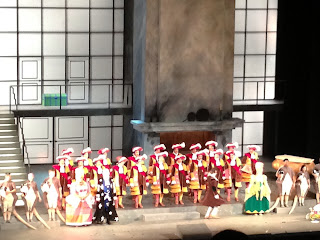This is a fascinating
account of Albino Luciani who was selected as Pope in 1978. He reluctantly accepted the position
and chose the name, Pope John Paul I.
David Suchet (who is well known for his portrayal of the Agatha Christie
character, Hercule Poirot a Belgium detective), plays the role of Cardinal
Giovanni Benelli.
I didn’t realize there
was so much intrigue and politics in the Vatican. I knew that there was to some extent due to the power and
wealth involved, but not to the extent as portrayed in this play.
When Pope Paul passed
away, Cardinal Benelli negotiated with other Cardinals to select Albino Luciani
because he himself lacked faith to be the Pope and he felt Albino would be a
better Pope to initiate change.
When Albino did become Pope, he started to make a lot of sensible
changes and transferring those who fought him to other roles. He worked relentlessly and 33 days into
his reign, he was found dead in his bed in the midst of reading reports.
There was an
investigation into his death because of the controversial circumstances but
nothing ever became of it. The
leaders of the investigating council felt further actions would keep a new Pope
from being elected and cause disruption in the church. It was never clear if it was a natural
death or if someone caused it.
At the beginning of the
play, 5 years after the death of Pope John Paul I, it was
Despite the intrigue and
politics, there are good men in the church but are influenced by the power,
wealth and maintaining the status quo. This was a well written, well acted play. We were in suspense the entire time and there was a standing ovation by the audience. Including us.
















